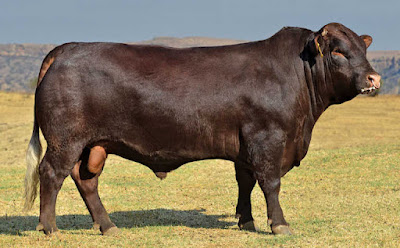Feedlot fattening for beef production
The beef cattle requires energy, proteins, minerals, vitamins and water in specified quantities every day. The resources are for normal body maintenance, including waste removal, growth including weight gain, reproduction and movement.
 |
| Enhancing beef production with feedlot fattening |
Animals in a feedlot are managed in a manner that ensures they use most of their nutrient resources for body maintenance and weight gain.
That is why they are confined to limit movement; they are supplied with highly nutritious feed at the recommended 3 per cent of their body weight in dry matter and very high levels of hygiene are ensured to minimize disease.
Males and females are separated to curtail reproduction activities. A beef feedlot should preferably be located in a low annual rainfall area below 750mm to minimize the nutrient resources allocated to temperature regulation and management of diseases associated with wetness such as foot rot, pneumonia and tick-borne infections.
It is, however, good to note that not all the animals will gain weight at the same rate. Careful selection of feedlot cattle will give the farmer a fairly uniform weight gain.
For those interested on how to feed the animals, feedlot cattle are offered specially-formulated diet that ensures they have the correct and uniform level of nutrients consistently throughout their feedlot stay.
Failure to give such feed will result in disappointment. The feeding regime recommended is three times a day of feed portions, constituting 3 percent of the animal’s body weight as dry matter.
Research from the Colorado State University in the US showed that animals fed once or twice per day have lower feed intake, lower weight gains and lower carcass weights than those fed three times per day.
Obtain feeds from a reputable manufacturer who formulates them specifically for feedlot cattle unless one is running a large-scale production that can economically formulate the feeds. Attempts to formulate feeds on site for small and medium feedlots are very costly and often short on quality.
Tags:
Beef Production
